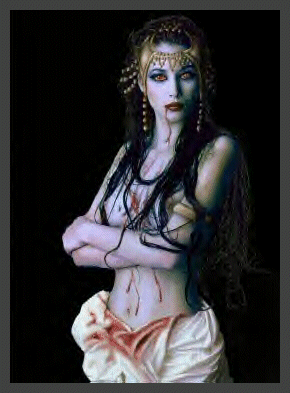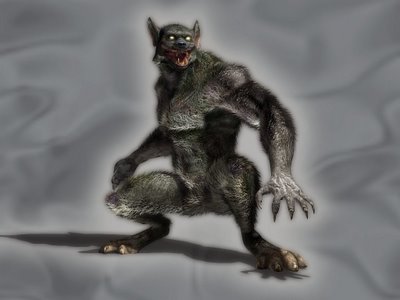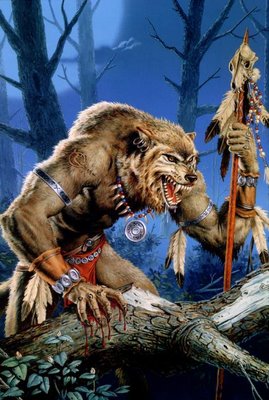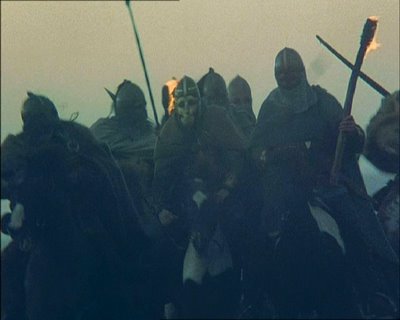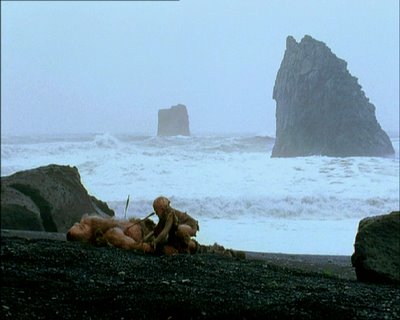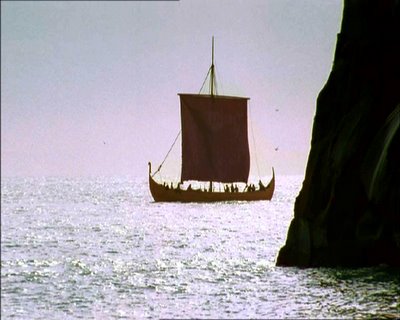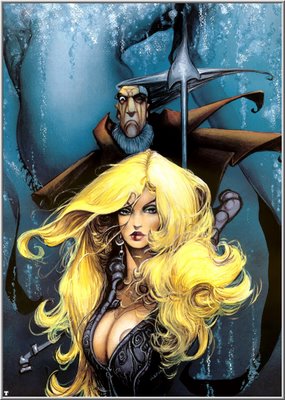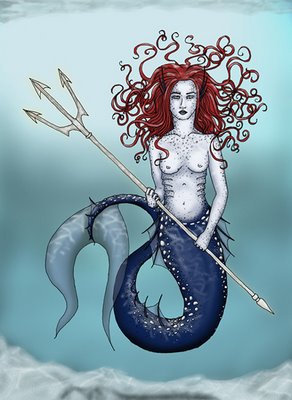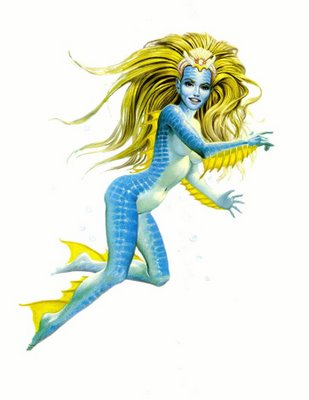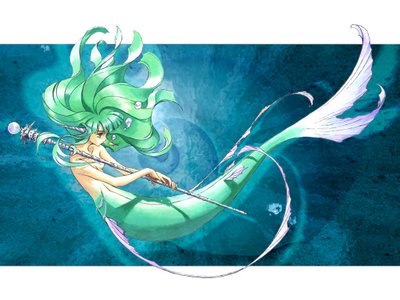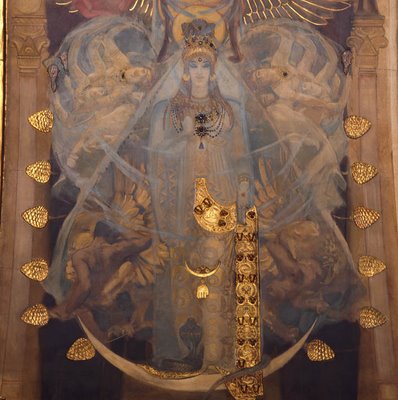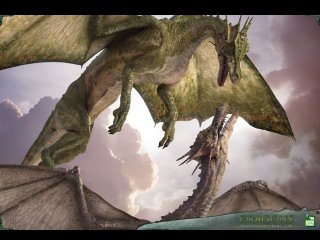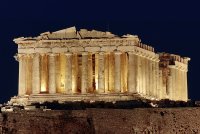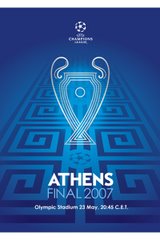14/7/07
19/10/06
Halloween Special
Myth-diagnosis:
What creature has very pale skin, has teeth of an unusual colour, sports long fingernails and only comes out at night? Everyone knows it’s a vampire.
Or is it?
The vampire legend probably arose from the appearance and behaviour of people suffering from porphyria, a disease that is actually a group of related disorders.
All variants of the disease are caused by overproduction of porphyrins—chemicals that do not normally accumulate in the body. Although symptoms are many, most notable is extreme sensitivity to sunlight.
Porphyria is rare, especially outside Eastern Europe, and difficult to diagnose. Symptoms of the disease mimic those of many other ailments: They include insomnia, anxiety, skin lesions, nausea and muscle weakness; some types of porphyria also cause excessive nail growth and receding gums. Exposure to sunlight causes the skin to become so fragile it breaks easily, and people with porphyria avoid being outside at any time during the day—hence the idea that vampires fear sun and roam the earth only at night.
Shedding Light on the Vampire Legend
The most notorious alleged vampire lived in 15th-century Romania. Vlad the Impaler was indeed a ghoulish ruler, whose bloodthirsty habits were known far and wide even before Bram Stoker’s day, but he was not the earliest vampire legend. Records of vampire stories exist from 12th-century England. The Impaler’s sadistic punishments for minor offences certainly fuelled legends, and by all accounts he did actually indulge in the blood of his victims.
By the 17th century, vampires were linked to evil and witchcraft. The 18th century saw vampire hysteria in Eastern Europe into which even government officials were drawn. And in the 19th century, of course, Bram Stoker’s Dracula cemented into popular cultures the myths that had developed over centuries.
The early beliefs—that vampires drank blood, were creatures of darkness, and were fascinated with counting—were enriched by the newer aspects of the myth. Only within the last 200 years were we introduced to vampires who are dressed in capes and who turn into bats. But with the migration of cultures and their legends, some of the interesting traditions were lost—such as leaving a pile of seeds outside the door so a vampire would be distracted by counting them, thus losing interest in drinking the inhabitants’ blood.
Even with some of the finer details lost, and with evidence that porphyria was the likely cause of an odd appearance and behaviour, the vampire has captured the imagination of the public like no other legend.
Werewolves or hypertrichosis
The myth of the werewolf or "shape-shifter" dates back to the cavemen. The condition on which the myth was based is almost surely older than that.
A condition that probably contributed to the werewolf myth is hypertrichosis or hirsutism, which causes excessive hair growth over the entire body. The condition is linked to endocrine malfunction, which can be genetic and present at birth. The gene that causes the disease was recently isolated by geneticists and is thought to be an atavism, a once common genetic trait that became less common as humans evolved. The trait is sex-linked and dominant; males who inherit the disease from their mothers develop the condition, while females who inherit only one of the trait-bearing chromosomes exhibit the thick hair growth in random patches.
The condition can also develop over the course of a lifetime. Often, acquired hypertrichosis is the result of hormonal irregularities.
Hypertrichosis, especially from birth, is rare, but well-documented. In the past and even today, people with the condition have appeared in circuses as "wolf-men" or "dog-boys." No doubt these public exhibitions have contributed to the werewolf fascination.
The Werewolf Evolves
Every culture has its werewolf. The mythology has had a stronger hold on some cultures than others. Germany is famous for its werewolves, popularized by the Brothers Grimm. In early legends, people who became werewolves were cursed with the condition, and simply acted as wolves after they were transformed. In later legends, the werewolf was better able to control the transformation, usually using a salve or special article of clothing, and used the ability only to attack livestock in enemy farmers’ fields. In these stories, people are accidental victims of the werewolf, if victims at all.
Over time, werewolf folklore evolved from simple shape-shifting and animal worship to the 19th century and present-day conceptions, which are closely, linked to both witch and vampire legends. The Western werewolf, epitomized in Stephen King’s The Silver Bullet, transforms according to lunar changes which are linked to witchcraft, and can only be killed by a silver bullet formed from a molten crucifix, reminiscent of vampire lore.
Copyright © Demetrios the Traveler
(Brexians lair)
by
brexians
στις
14:35
0
of you said:
![]()
Ετικέτες ENGLISH, MYTHOLOGY, PAGAN, SCIENCE, WEIRD NEWS
7/10/06
Ο δίσκος της Φαιστού
Ο δίσκος της Φαιστού βρέθηκε το 1908 στα ερείπια του παλαιού Μινωϊκού ανακτόρου της Φαιστού στην Κρήτη. Χρονολογείται γύρω στο 1700 π.Χ. περίπου. Είναι φτιαγμένος από πηλό, η μέση του διάμετρος είναι 16 εκ. και το πάχος του 2.1 εκ. Η μυστηριώδης του επιγραφή αποτελείται από 241 σύμβολα, 122 στην πλευρά A και 119 στην πλευρά B, σε σπειροειδή διάταξη. Τα 45 διαφορετικά σύμβολα τυπώθηκαν στον πηλό και μετά ο δίσκος ψήθηκε στη φωτιά. Γι αυτό το λόγο ο δίσκος της Φαιστού αποτελεί το αρχαιότερο δείγμα τυπογραφίας.
Αναρίθμητες προσπάθειες έχουν γίνει για την αποκρυπτογράφηση του δίσκου της Φαιστού, χρησιμοποιώντας τελείως διαφορετικές μεθόδους και καταλήγοντας σε εντελώς διαφορετικά συμπεράσματα για το σκοπό, το περιεχόμενο του και τους δημιουργούς του. Για μια συλλογή από τέτοιες προσπάθειες δες αυτή τη σελίδα.
Πρόσφατα η Έφη Πολυγιαννάκη δημοσίευσε στην Ελλάδα ένα βιβλίο με τίτλο "Ο δίσκος της Φαιστού μιλάει Ελληνικά" (2000, 3η έκδοσις, Εκδόσεις Γεωργιάδη, Ακαδημίας 84, Αθήνα και στα βιβλιοπωλεία) . Το βιβλίο επίσης μεταφράζεται από το Δρ. Θ.Αντίκα και σχεδιάζεται να εκδοθεί σε άλλες χώρες μέσα στο 2004).
Σε αυτό το βιβλίο παρέχει πειστικά επιχειρήματα για το ότι ο δίσκος της Φαιστού γράφτηκε σε ένα συλλαβικό σύστημα γραφής μιας αρχαίας Ελληνικής διαλέκτου. Σύμφωνα με την αποκρυπτογράφησή της, το περιεχόμενο του κειμένου είναι θρησκευτικό. Όπως αναφέρει η συγγραφέας:
"Από την 3η π.Χ. χιλιετία ως τα μέσα της 2ας περίπου με κέντρο την Κρήτη άνθισε ένας Αιγαίος πολιτισμός αυτόφωτος και πρωτότυπος, που όμοιό του σε επίπεδο δεν είχε γνωρίσει μέχρι τότε η ανθρωπότητα! Ποιοί ακριβώς ήσαν, όμως, οι δημιουργοί του Μινωϊκού πολιτισμού; Ποιά είναι δηλαδή η φυλετική ταυτότητα και η καταγωγή τους, και ποιά γλώσσα εν τέλει κρύβεται πίσω από τα μυστηριώδη Κρητικά ιερογλυφικά, την άγνωστη Γραμμική γραφή Α και την κυπρομινωϊκή;
Στο παρόν βιβλίο πιστεύω ότι δίνονται οι απαντήσεις στα σοβαρά αυτά ερωτήματα. Νέες τεκμηριωμένες θέσεις θα ταράξουν τα ήρεμα νερά της επικρατούσης ιστορικής αντιλήψεως σχετικώς με τα παραπάνω θέματα, η οποία όμως ούτως ή άλλως εστηρίζετο σε κάποια επισφαλή επιχειρήματα, παραμένοντας καθηλωμένη σε μια αρχική διατύπωση. Το βιβλίο έχει δομή "πυραμίδος", με κορυφαίο λίθο την μέθοδο αναγνώσεως του αινιγματικού κειμένου του πασίγνωστου μνημείου της κρητικής ιερογλυφικής γραφής, του Δίσκου της Φαιστού!"
(Brexians lair)
6/10/06
ποιητική εντροπία
να τραγουδήσω μου ζητά η ψυχή. Εσείς θεοί μου,
της μεταμόρφωσης η αιτία, βοηθήστε με και το τραγούδι
πλέξτε αδιάκοπο απ' την αρχή του κόσμου ως τις μέρες μου.
Ovidios, Metamorphoses
(Brexians lair)
by
brexians
στις
22:04
0
of you said:
![]()
24/9/06
Beowolf - The Epic Poem
The epic poem Beowulf describes the most heroic man of the
Anglo-Saxon times.
The hero, Beowulf, is a seemingly invincible person
with all the extraordinary traits required of a hero. He is able to
use his super-human physical strength and courage to put his people
before himself.
He encounters hideous monsters and the most ferocious
of beasts but he never fears the threat of death. His leadership
skills are superb and he is even able to boast about all his
achievements. Beowulf is the ultimate epic hero who risks his life
countless times for immortal glory and for the good of others.
Beowulf is a hero in the eyes of his fellow men through his
amazing physical strength.
He fought in numerous battles and returned
victorious from all but his last. In his argument with Unferth,
Beowulf explains the reason he "lost" a simple swimming match with his
youthful opponent Brecca. Not only had Beowulf been swimming for seven
nights, he had also stopped to kill nine sea creatures in the depths
of the ocean.
Beowulf is also strong enough to kill the monster
Grendel, who has been terrorizing the Danes for twelve years, with his
bare hands by ripping off his arm. When Beowulf is fighting Grendel's
mother, who is seeking revenge on her son's death, he is able to slay
her by slashing the monster's neck with a Giant's sword that can
only be lifted by a person as strong as Beowulf. When he chops off her
head, he carries it from the ocean with ease, but it takes four men to
lift and carry it back to Herot mead-hall. This strength is a key
trait of Beowulf's heroism.
Another heroic trait of Beowulf is his ability to put his peoples
welfare before his own. Beowulf's uncle is king of the Geats so he is
sent as an emissary to help rid the Danes of the evil Grendel. Beowulf
risks his own life for the Danes, asking help from no one. He realizes
the dangers but fears nothing for his own life. After Beowulf had
served his people as King of the Geats for fifty years, he goes to
battle one last time to fight a horrible dragon who is frightening all
of his people. Beowulf is old and tired but he defeats the dragon in
order to protect his people. Even in death he wished so secure safety
for the Geats so a tall lighthouse is built in order to help the
people find there way back from sea.
The most heroic of traits within Beowulf is that he is not afraid
to die. He always explains his death wishes before going into battle
and requests to have any assets delivered to his people. "And if death
does take me, send the hammered mail of my armor to Higlac, return the
inheritance I had from Hrehtel, and from Wayland. Fate will unwind as
it must! " He is aware of the heroic paradox; he will be glorified
in life or death for his actions. He knows that when he fights an
enemy like Grendel or Grendel's mother he will achieve immortality as
the victor or the loser. "When we crossed the sea, my comrades and I,
I already knew that all my purpose was this: to win the good will of
your people or die in battle, pressed in Grendel's fierce grip.
Let me live in greatness and courage, or here in this hall welcome my
death! " Even with the enormous amount of confidence Beowulf
possesses, he understands that Fate or Wyrd will work its magic no
matter what and he could be killed at any point in his life. He faces
that reality by showing no fear and preparing for a positive or a
fatal outcome.
Beowulf is the prime example of an epic hero. His bravery and
strength surpass all mortal men; loyalty and the ability to think of
himself last makes him reveared by all. Beowulf came openly and
wholeheartedly to help the Danes which was an unusual occurrence in a
time of war and wide-spread fear. He set a noble example for all human
beings relaying the necessity of brotherhood and friendship. Beowulf
is most definitely an epic hero of epic proportions.

(Brexians lair)
23/9/06
22/9/06
Σχετικά με τον όρο «Paganismus»
(Brexians lair)
1/9/06
ΖΕΥΣ
Thousands of years ago many people believed in a god named Zeus. He was considered to be the god of the sky and weather and his image appeared on most Greek coins. The people of Greece worshipped this idol as their god. Zeus became one of the Seven Wonders of the World.
Phidias, a famous Greek sculptor and his laborers carved a giant statue of Zeus in a special workshop behind the temple. It was made entirely of ivory and gold (Chryselephantine). When finished it sat in the temple on an elaborate throne along with sculptures and paintings of Greek myths and legends. Zeus was the most celebrated statue of ancient times because of its greatness, charm and worth.
Zeus was the supreme god and ruler of Olympus. He was known by many titles: Lord of the Sky, the Cloud- gatherer, the Rain-god and Zeus the Thunderer, all of which show which force of nature was considered to be the most important in Ancient World - rain. In most other mythologies the "ruler-god" was usually associated with the sun, but in Greece the climate is hot and dry making rain the scarce, life-giving force.
Zeus was the sixth child born to Cronus and Rhea, Because Cronus, ruler of the Titans and the supreme god at the time, was afraid that one of his children would overthrow him, just like he overthrew his father, Uranus, he swallowed his first five children - Poseidon, Hades, Hera, Demeter and Hestia. This, of course, infuriated Rhea and when Zeus was born she tricked Cronus into swallowing a rock wrapped in blankets. Zeus is more powerful than any other god or even all the other gods combined. But, unlike many gods in other religions he was neither omnipotent nor omniscient. He could be, and in fact was, opposed, deceived and tricked by gods and men alike. His power, although great, was not boundless, Zeus had no control over The Fates and Destiny. Like all Greek divinities, Zeus was subject to pleasure, pain, grief, and anger, but he was most susceptible to the power of Eros - love, which often got the objects of his desire in a lot of trouble with his wife, Hera.
Zeus was mighty, glorious, awesome and wise, although he did show a certain degree of surprising foolishness and naiveness when it came to hiding his love affairs. Some historians attribute this less than noble behavior of the "noblest one of all" to the fact that Zeus was most likely a compilation of many "supreme gods" from different areas. When his worship spread to an area which already worshipped another god, some of that god’s qualities as well as his wife or lover were transferred to Zeus. Aside from the endless affairs Zeus was different from other gods in that he did not participate in the arguments and the resulting petty scheming that made up the daily activities of other gods. Being this wise ruler, he also demanded just and righteous action from men. Zeus was however vengeful, as can be seen in The creation of man by Prometheus, but only rightly so.
Zeus had two special attendants, Nike (Victoria), the goddess of victory, and his cup-bearer, Hebe, who was one of his numerous daughters. After Hebe married Heracles, Ganymede replaced her as the cup-bearer for Zeus. In Roman Mythology, Zeus’ counterpart, Jupiter, was also attended by Fama (fame) and Fortuna (luck and chance, Tyche in Greek).
Zeus was the guardian of political order and peace. The aegis is his breastplate - so glorious and at the same time awful to behold that no human could see Zeus in all his magnificence and survive. His weapon is, of course the thunderbolt which he hurled at whoever displeased him. The thunderbolts were fashioned for him the three Cyclopes who also were the deciding power in the battle with the Titans. His bird is the Eagle, his tree - the Oak. Dodona was his oracle. His will was revealed by the rustling of oak leaves which was interpreted by his priests.
(Brexians lair)
by
brexians
στις
00:03
0
of you said:
![]()
10/8/06
DRAGONS - ΔΡΑΚΟΙ - BALAUR

Un balaur este, în mitologia românească, un animal fantastic de dimensiune uriaşă, de multe ori are forma unui şarpe cu aripi, picioare şi mai multe capete de şarpe (în general trei, şapte sau chiar douăsprezece), reprezentând o întruchipare a răului şi este prezent în majoritatea basmelor româneşti.
Rădăcina cuvântului este probabil indo-europeanul „bal-“ care înseamnă puternic.
În alte mitologii, poate fi asemănat cu dragonul european sau cu hidra din mitologia grecească.
A dragon is typically depicted as a large and powerful serpent or other reptile, with magical or spiritual qualities. Mythological creatures possessing some or most of the characteristics typically associated with dragons are common throughout the world's cultures.
The various figures now called dragons probably have no single origin, but were spontaneously envisioned in nearly every different culture around the world, based loosely on the appearance of a snake and/or large bird of prey and possibly fossilized dinosaur and Tertiary mammal megafauna remains.
They are commonly portrayed as serpentine or reptilian, hatching from eggs and possessing long, typically scaly, bodies; dragons are almost always portrayed as having large eyes, a feature that is the origin for the word for dragon in many cultures, and is often (but not always) portrayed with wings and a fiery breath.
Although dragons (or dragon-like creatures) occur commonly in legends around the world, different cultures have perceived them differently. Chinese dragons (Simplified Chinese: 龙; Traditional Chinese: 龍; pinyin: lóng), and Eastern dragons generally, are usually seen as benevolent, whereas European dragons are usually malevolent (there are of course exceptions to these rules). Malevolent dragons also occur in Persian mythology (see Azhi Dahaka) and other cultures.
Dragons are often held to have major spiritual significance in various religions and cultures around the world. In many Eastern and Native American cultures dragons were, and in some cultures still are, revered as representative of the primal forces of nature and the universe. They are associated with wisdom—often said to be wiser than humans—and longevity. They are commonly said to possess some form of magic or other supernatural power, and are often associated with wells, rain, and rivers. In some cultures, they are said to be capable of human speech.
Dragons are very popular characters in fantasy literature, role-playing games and video games today. The term dragoon, for infantry that move around by horse, yet still fight as foot soldiers, is derived from their early firearm, the "dragon", a wide-bore musket that spat flame when it fired, and was thus named for the mythical beast.
Symbolism
In medieval symbolism, dragons were often symbolic of apostasy and treachery, but also of anger and envy, and eventually symbolised great calamity. Several heads were symbolic of decadence and oppression, and also of heresy. They also served as symbols for independence, leadership and strength. Many dragons also represent wisdom; slaying a dragon not only gave access to its treasure hoard, but meant the hero had bested the most cunning of all creatures. In some cultures, especially Chinese, or around the Himalayas, dragons are considered to represent good luck.
In Christianity
The Latin word for a dragon, draco (genitive: draconis), actually means snake or serpent, emphasising the European association of dragons with snakes. The Medieval Biblical interpretation of the Devil being associated with the serpent who tempted Adam and Eve, thus gave a snake-like dragon connotations of evil. Generally speaking, Biblical literature itself did not portray this association (save for the book of Revelations, whose treatment of dragons is detailed below). The demonic opponents of God, Christ, or good Christians have commonly been portrayed as reptilian or chimeric.
In the Book of Job Chapter 41, the sea monster Leviathan, which has some dragon-like characteristics, is described as God talks about the "king of beasts" that lived upon the Earth at a former time. Some people think this comes from an older Mesopotamian creation myth in which Tiamat is depicted as a goddess salt-water sea monster, while others believe it refers to a now-extinct sea creature like the Plesiosaur. [citation needed]
In Revelation 12:3, an enormous red beast with seven heads is described, whose tail sweeps one third of the stars from heaven down to earth (held to be symbolic of the fall of the angels, though not commonly held among biblical scholars). In some translations, the word "dragon" is used to describe the beast,since in the original Greek the word used is drakon (δρακον).
In iconography, some Catholic saints are depicted in the act of killing a dragon. This is one of the common aspects of Saint George in Egyptian Coptic iconography [1], on the coat of arms of Moscow, and in English and Aragonese legend. In Italy, Saint Mercurialis, first bishop of the city of Forlì, is also depicted slaying a dragon.[2] Saint Julian of Le Mans and Saint Leonard of Noblac were also venerated as dragon-slayers.
MAY THE FORCE BE WITH YOU
by
brexians
στις
22:40
0
of you said:
![]()
Ετικέτες ΕΛΛΗΝΙΚΑ, ENGLISH, LIMBA ROMANA, MYTHOLOGY
MEDUSA ,,,,,,,,, ΜΕΔΟΥΣΑ
Medusa was killed by the hero Perseus with the help of Athena and Hermes. He killed her by cutting of her head and gave it to Athena, who placed it in the center of her Aegis, which she wore over her breastplate.
From Medusa's dead body the giant Chrysaor and the winged horse Pegasus, her son by Poseidon, sprang forth.


Medusa este fiica monstruoasă a lui Phorcys şi a lui Ceto şi una dintre gorgone, singura care este muritoare dintre cele trei. Privirea sa putea transforma pe orice muritor în stană de piatră. Există un mit care spune că Medusa fusese la început o fecioară frumoasă. A desacralizat templul Atenei culcându-se în el cu Poseidon. Furioasă, Atena a preschimbat părul Medusei în şerpi vii.
Medusa a fost ucisă de eroul Perseus cu ajutorul Atenei şi al lui Hermes. A ucis-o tăindu-i capul şi dându-i-l Atenei, care l-a întipărit pe egida ei, purtată drept platoşă.
Din corpul neînsufleţit al Medusei au răsărit gigantul Chrysaor şi calul înaripat Pegas, fiul său cu Poseidon.
by
brexians
στις
16:54
0
of you said:
![]()
Ετικέτες ΕΛΛΗΝΙΚΑ, ENGLISH, LIMBA ROMANA, MYTHOLOGY
SAD ELF....WHY?
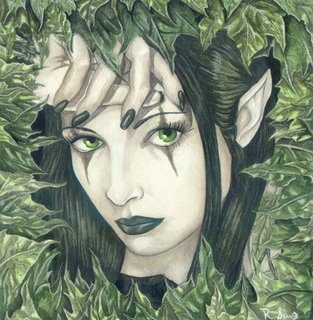
An elf is a mythical creature/creature of Germanic mythology/paganism which still survives in northern European folklore. In Norse mythology they were originally a race of minor gods of nature and fertility. Elves are often pictured as youthful-seeming men and women of great beauty living in forests and other natural places, underground, or in wells and springs. They have been portrayed to be long-lived or immortal and they have magical powers attributed to them.
Following the success of J.R.R. Tolkien's epic work based on ancient English culture The Lord of the Rings—wherein a wise, angelic people named elves play a significant role—they have become staple characters of modern fantasy.
Elf can be pluralized both as elves and elfs. Something associated with elves or the qualities of elves is described by the adjectives elven, elvish, elfin or elfish. A convention of modern fantasy usage is: the v in elven or elvish refers to human-sized elves (who correspond more closely to the mythology of the Viking Era), whereas the f in elfin or elfish refers to tiny-sized elfs (who correspond more closely to the folklore of the Renaissance and Romantic Eras). They are also called:
Germanic/Norse Countries:
Germany: Elfen, Elben and Alben
Great Britain: addler (obsolete)
Netherlands: Elfen, Alfen, Elven
Denmark: alfer, elvere, elverfolk, ellefolk or huldrer.
Iceland: álfar, álfafólk and huldufólk (hidden people)
Norway: alver, alfer or elvefolk
Sweden: alfer, alver or älvor
Other countries:
France: Elfe, Elfes
Brazil: Elfo, Elfos
Spain: Duende, Duendes; Elfo, Elfos
After much debate, the consensus is elf, álf and related words derive from the Proto-Indo-European root *albh meaning "white", whence also the Latin albus "white", whence Portuguese and English albino.
Likely, the ancient name refers to the "ghostly white apparations" of the elf-spirits: perhaps transparent.
MAY THE FORCE BE WITH YOU
by
brexians
στις
16:24
0
of you said:
![]()
20/7/06
Athena
Athena, one of the most important goddesses in Greek mythology. In Roman mythology she became identified with the goddess Minerva. Also known as Pallas Athena. Athena sprang full-grown and armoured from the forehead of the god Zeus and was his favourite child.
He entrusted her with his shield, adorned with the hideous head of Medusa the Gorgon, his buckler, and his principal weapon, the thunderbolt. A virgin goddess, she was called Parthenos ("the maiden"). Her major temple, the Parthenon, was in Athens, which, according to legend, became hers as a result of her gift of the olive tree to the Athenian people.
Athena was primarily the goddess of the Greek cities, of industry and the arts, and, in later mythology, of wisdom; she was also goddess of war. Athena was the strongest supporter, among the gods, of the Greek side in the Trojan War. After the fall of Troy, however, the Greeks failed to respect the sanctity of an altar to Athena at which the Trojan prophet Cassandra sought shelter. As punishment, storms sent by the god of the sea, Poseidon, at Athena's request destroyed most of the Greek ships returning from Troy.
Athena was also a patron of the agricultural arts and of the crafts of women, especially spinning and weaving. Among her gifts to man were the inventions of the plow and the flute and the arts of taming animals, building ships, and making shoes. She was often associated with birds, especially the owl.
by
brexians
στις
00:23
0
of you said:
![]()
13/7/06
Ancient Myths to Athena
The Homeric Hymns
The religious poetry to which we refer as the Homeric Hymns was attributed in ancient times to Homer, the poet of the Iliad and Odyssey. Although nobody today regards them as the work of Homer, they are quite skilfully composed and may be dated very early. For scholars they represent an important source of information about Greek religion. The Homeric Hymn to Demeter, for instance, is a key document in the understanding of the Eleusinian mysteries.
There are two Homeric Hymns to the goddess Athena, one extolling her virtues as patron of the city, the other recounting beautifully her birth from the cleft brow of father Zeus.
Homeric Hymn 11
I begin to sing of Pallas Athena, the dread Protectress of the city, who with Ares looks after matters of war, the plundering of cities, the battle cry and the fray. It is She who protects the people, wherever they might come or go. Hail, Goddess, and give us good spirits and blessed favour!
Notes
I begin to sing of Pallas Athena... Pallas is an ancient epithet of Athena. Although some have argued that it is a form of pallo, to brandish, most feel that Pallas is in fact an archaic word for maiden.
...Dread Protectress of the city... "City-protecting" (erusiptolis) is a common epithet of Athena.
Homeric Hymn 28
I begin my song of Pallas Athena, illustrious goddess with sharp grey eyes. Crafty one, She, with a heart relentless, modest Virgin, Protectress of the city! Zeus the wise from his own awesome brow, the tools of battle on her arm, glittering and gold, roused the valiant Tritogeneia: All the immortals were stunned. Without delay she leapt from the ever-living skull to come before Zeus, master of the aegis, and the sharp javelin rattled in her hand. Mighty Olympus was sent madly spinning by the potency of her, of the Grey-eyed one. From every direction the earth let loose a chilling scream. Waves, deep and dark, stirred up in the seething ocean, and all at once spray jetted from the sea. The shining son of Hyperion brought his swift steeds to rest, waiting long, until the Maiden divested her incorruptible shoulders of the godlike armour... She, Pallas Athena! Wise Zeus laughed! That is why I say it too: Hail to you, Daughter of aegis-wielding Zeus! While now I sing a different song, I always remember you!
Notes
Illustrious goddess with sharp grey eyes... This term (glaukopis) is an epithet of Athena throughout Homeric literature and is found in later sources as well. Often it is simply rendered "grey-eyed." However, the sense of the word may refer less to the colour of the eyes as to their glare or opacity owing to the gemstones used for the eyes of statues of Athena.
Modest Virgin, Protectress of the city... "Virgin" is Parthenos, for which the Parthenon is named.
The valiant Tritogeneia was roused... Although Tritogeneia ranks with Pallas as an ancient epithet of Athena, its exact meaning is now unknown. "Born of the Triton" and "triple born" are typical suggestions.
Zeus, master of the aegis... The aegis was a magical shield in the property of Zeus. The Homeric Hymn twice refers to Zeus as "aegis-holder."
The Orphic Hymn to Athena
The Orphic Hymns are a collection of eighty-seven ritual invocations, which were probably used by certain initiates of the Orphic mystery cult. Though some have placed them far later (as well as far earlier), they were probably composed between 100 BCE and 150 CE.
The Orphic Hymn to Athena celebrates the goddess with a dizzying barrage of colourful and often baffling imagery.
To Athena, with an incense of aromatic herbs.
Pallas, you only-begotten One, born of mighty Zeus, awesome you are, and divine: Goddess so blessed, lifting high the turmoil of the fray, Mighty One unspeakable yet so well spoken of! Great-named One at home in a vault of stone, Caught up in haughty hills and wandering the shaded mountain's ridge, You who put a dance in the heart and glory in embattlements, You can put the sting of mania into a mortal soul! Athletic Maiden with a heart sublime, Slayer of the Gorgon, fugitive of the bridal bed, Mother of Art in all your abundance, catalyst of progress! You bring folly to the corrupt and a sense of purpose to the pure! Indeed, you are male and female in one, Patron of war and wisdom, you are fluid of form, a dragon, Infused with inspiration of the Gods! Rightly-honoured One, who brought Phlegran giants down to defeat, You driver of steeds, Tritogeneia, save us from evil, bearing Victory in your arms! Day and night, eternally, in even the loneliest hours, hear my prayer, and grant us an abundant peace, fulfilment, good health. Make prosperous the hour, grey-eyed One, inventor of Art, The object of the people's ceaseless prayers-- My Queen!
Notes
Pallas, you only-begotten One... This term, monogenes, means only-born. It is interesting to note that another important Wisdom-figure, the divine Logos, is described as "the only-begotten of God" in the Johannine literature of the New Testament.
Mighty One unspeakable yet so well spoken of... The Greek arrhete refers to a reverent, even fearful, silence. In the hymn it is followed immediately by rhete, its opposite.
Great-named One at home in a vault of stone... The Greek word antrodiaitos literally means, "to make one's home in a cavern" or "grotto." This seems an unexpected chthonic attribution, although one might understand the Parthenon as an artificial cavern of sorts.
Slayer of the Gorgon, fugitive of the bridal bed... An epithet of Athena, who aided Perseus in the act of destroying the monsters. Athena's statue in the Parthenon depicted the head of the Gorgon on her breastplate, the aegis.
You driver of steeds, Tritogeneia, save us from evil, bearing Victory in your arms... The name Tritogeneia is of uncertain derivation and meaning. Nikephore means, "carrying victory," and in the ancient Parthenon Athena was shown carrying Nike, victory personified.
by
brexians
στις
16:17
0
of you said:
![]()

